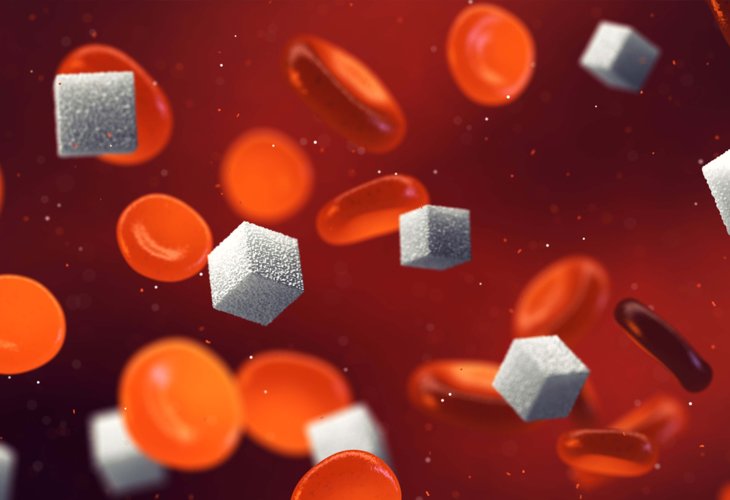Craving Sweets All Day? What You Need to Know About High Sugar Levels
For diabetics, there is a problem with the secretion or absorption of the hormone insulin secreted by the pancreas, creating conditions of hyperglycemia (high sugar levels). What are the causes and how to avoid them?
 (Photo: shutterstock)
(Photo: shutterstock)The human body has an efficient system designed to balance blood sugar levels, so after consuming sugar from food, insulin is secreted—a hormone that helps cells absorb glucose which is converted into energy. This is typical in healthy individuals, but fluctuations in sugar levels are not unique to diabetics. These out-of-balance states are known as hyperglycemia (when sugar level rises) and hypoglycemia (when sugar levels fall). Here's everything you need to know about the symptoms, causes, and how to avoid these conditions.
Recently, the Health Basket Committee approved the Freestyle Libre device for type 2 diabetics requiring daily insulin injections. This device continuously monitors sugar levels without pricks, helping diabetics maintain balanced sugar levels, examine the impact of daily nutrition, and live a healthier lifestyle alongside diabetes.
Hyperglycemia (High Sugar Levels)
Hyperglycemia occurs when the body does not produce enough insulin or the use of insulin is disrupted and inefficient. We mainly feel a rise in sugar levels after a particularly glucose- and sugar-rich meal. Symptoms of hyperglycemia may not appear until blood sugar levels rise beyond 200 mg/dl; even at this level, symptoms might not appear immediately or at all. A person might suffer from hyperglycemia without experiencing noticeable symptoms for years. Symptoms tend to worsen as blood sugar levels remain higher.
Causes of Hyperglycemia
Hyperglycemia typically occurs in people with pre-diabetes or diabetes. Causes of hyperglycemia in people with diabetes include:
- Eating more than the body requires for its energy needs
- Lack of sufficient physical activity
- Stress at work, in life, and in relationships, which may release hormones keeping high glucose levels in the blood.
- Illness, such as the flu, which can lead to stress causing a rise in blood sugar levels
- A lack of diabetes medication like insulin
Severe untreated hyperglycemia can lead to life-threatening conditions. If a person with diabetes does not take measures to control blood sugar levels, cells become less sensitive to insulin. Additionally, due to imbalance, ketoacidosis can occur due to very high sugar values which cause the body to use fat stores for energy consumption, increasing body acidity levels and potentially leading to diabetic complications. Therefore, it is recommended to use a ketone meter that checks the ketone level in the blood and can prevent such complications.
Hyperglycemia in individuals not diagnosed with diabetes is known as non-diabetic hyperglycemia. It can occur in severely ill or injured people when the body responds to extreme stress with hormonal changes affecting blood sugar levels. It can also occur in people with pancreatic issues and hormonal disorders.
Symptoms of hyperglycemia may include:
- Frequent urge to urinate
- Excessive thirst
- Extreme, unusual hunger
- Headaches
- Blurred vision
- Weight loss
- Fatigue
- Irritability
Hyperglycemia in diabetics usually appears when glucose levels are above 130 mg/dl before a meal or more than 180 mg/dl two hours after starting a meal. Diabetics must self-monitor regularly to detect glucose levels before reaching the stage where they already feel symptoms.
Hyperglycemia with Diabetes
Most people experience a rise in blood sugar levels after consuming an exceptionally large, carbohydrate-rich meal. Individuals experiencing consistent hyperglycemia may suffer from low insulin levels or inefficient insulin use due to diabetes.
Insulin is a hormone produced in the pancreas that allows cells to use glucose to create energy and function properly. When insulin levels are low or inefficient, diabetes may develop.
There are two types of diabetes: Type 1 diabetes occurs when the body does not produce insulin. Type 2 diabetes occurs when the body does not use insulin efficiently. As a result, high levels of glucose remain in the blood.
Overweight or obese people who do not engage in enough physical activity may have high blood sugar levels. This can reduce the efficiency of insulin due to higher sugar levels than it can process, leading to type 2 diabetes.
In summary, hyperglycemia is a high blood glucose level that can occur due to insufficient or ineffective insulin, diet, and a sedentary lifestyle. Hormonal fluctuations due to stress and the "dawn phenomenon" can also lead to periods of hyperglycemia.
Symptoms include frequent urination, intense thirst, and high blood sugar levels during self-monitoring. If a person does not manage high blood sugar levels, they may develop ketoacidosis, a dangerous buildup of waste products that can lead to diabetic coma.
Treatment involves adjustments to diabetes medication, physical activity, and eating less during meals. Carrying medical identification is essential for people with diabetes as it can affect the quality of care they receive in medical emergencies.
Prof. Julio Weinstein is the Head of the Diabetes Research Unit at Wolfson Hospital and a senior diabetes physician at the DMCDiabetes Treatment Center.

